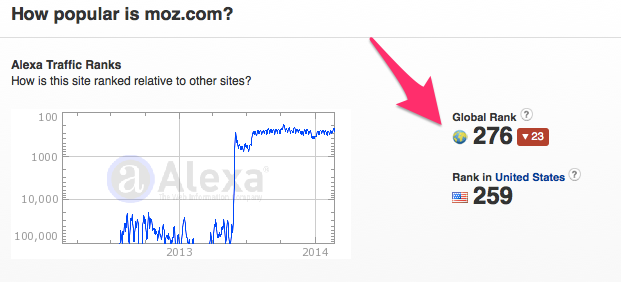The Ultimate 22-Point Blog Post Checklist

Are you familiar with the power of checklists? Checklists are an ultimate time-saving device, so you can make sure you don’t forget anything (even if you’re moving very quickly). They are so powerful that leading surgeon Dr. Atul Gawande actually wrote a book called “The Checklist Manifesto: How to Get Things Right.”
And guess what?
Checklists aren’t just for brain surgeons. They’re also an incredibly powerful tool for writing flawless blog posts.
Once you’ve put tons of effort into writing an original blog article, wouldn’t it be a bummer to forget some minor thing at the very last moment? Unfortunately, even the smallest slip-up can cause you to lose credibility, SEO optimization potential, or even blog subscribers. It’s like the old saying that “one rotten apple can spoil the entire barrel.”
Fortunately, there’s no need to stress any longer, even if you’re on a tight deadline with only a few minutes until your article needs to go live. We’ve pulled together a checklist of writing, formatting, SEO, and user experience best practices that’s ready for the road. With this checklist, you’ll be sure to get your blog posts right!
1. Is your blog post title catchy and appealing to your readers?
Your headline is the single most important aspect of your content! For more details on how to gauge whether your title is truly optimized, I recommend you check out Copyblogger’s 52 Headline Hacks: a Cheat Sheet for Writing Blog Posts that Go Viral.
2. Is your blog post title between 40 – 69 characters long?
This is the optimal Title length. Anything shorter might not be descriptive and specific enough to capture attention. If your post title is longer, the title will be cut off at 69 characters in search results, and your click-throughs will likely decrease. In this case, your readers will not be able to get the complete idea as you’d originally intended.
3. Is your description tag length between 135 and 160 characters?
This is the optimum Description length according to Moz. Meta descriptions that are longer than 160 characters will be cut off in search results.
4. Is your main keyword included in your blog post title?
Your page title, or H1 tag, carries more weight for search engines than any other page content when it comes to search engines determining the intent of your page and ranking it accordingly. Not only should your post title include your keyword, but it’s best to incorporate it as close to the beginning of title as possible in “as is” form, without modifications.
5. Is your main keyword mentioned in the description tag?
It’s important to communicate the point of your page by including your primary keyword in this text. Write something that’s both SEO-rich and so enticing search users can’t help but click-through from search results.
6. Is your main keyword mentioned in the body of your article?
Google’s own webmaster quality guidelines recommend that your “site actually includes those words.” You don’t need to worry about achieving any specific keyword density, but ensure you’re including the primary keyword where it fits naturally throughout your content.
7. Does your blog post include synonyms Google associates with your main keyword?
To determine the most effective variations of your primary keyword, simply Google your main term and check the “related” keywords, which is illustrated below. Not only are these variations going to be logical relatives, they’re included in suggestions because they’re driving a high volume of search traffic.

8. Does your language sound natural? Did you place keywords and synonyms only where it’s relevant throughout the text?
Both Google and people can tell if you’re trying to stuff keywords for a quick SEO boost. This tactic doesn’t work, and in fact, Google’s own guidelines advise content marketers to “write naturally.” Your focus should be on providing value around your keywords, not hitting a certain keyword density.
9. Does the body of your post link to at least 2 reputable industry resources?
To check the quality level of your citations, I recommend using Open Site Explorer from Moz. With this data – I’d doubt anything under 30 in popularity.

Another way to understand how popular a website is using Alexa.
In case of Alexa – I’d question KPI of 500,000 and above.

10. Does the blog post include 2-3 links to relevant pages on your website?
An internal linking strategy is important for improving your SEO and providing useful guidelines to users on where to click next – where appropriate. I recommend coming up with a link of important site pages you’d like to rank better in search, and referring to the list whenever you feel it’s contextually right to place a link in your post.
11. Did you give proper credit to the images you used in your blog post?
You can easily search for images licensed for commercial use using the Creative Commons Search Engine.
Free Digital Photos and Vecteezy also provide easy access to free, professional looking photos. If you need something specific or high-resolution, I recommend purchasing pictures from places like Shutterstock and Fotolia.
12. Do your images fit the overall design and feel of your website?
Humans are highly-visual, and noticeably low-quality or irrelevant images won’t do you any favors. Any visual content you incorporate into your article should match both the purpose of your content and your company’s branding standards as a whole.
13. Did you use custom-made images and screenshots instead of stock photos whenever possible?
Did you know that stock photos can actually decrease your website conversions by 95%? Whenever possible, enhance the value of your content with original, informative pictures you’ve taken yourself or created in-house.
14. Did you add descriptive tags for images with the keyword in it?
Alternative text, more commonly known as “alt text” is used for your website visitors with visual impairment. Even major search engines don’t currently have the capacity to determine the content of an image, so alt text is an SEO factor used for ranking your page. It’s a perfect place to incorporate a long tail keyword or phrase.
15. Did you back up any data or facts with links to reputable sources?
If you’re having trouble finding the source for a statistic that you know by heart, I recommend using Factbrowser.com. Described as a “research discovery engine” it’s like a search engine that exclusively focuses on reputable studies, reports, and data.
16. Does the voice fit the overall tone of your blog, and your brand’s editorial guidelines?
In most cases, it’s best to strive for a conversational tone. Your goal should be to open a dialogue with your reader!
To learn how to define your brand’s unique voice, check out 14 Tools for Writing a Content Marketing Style Guide for Your Blog.
17. Is your post optimized to your buyer persona profiles?
Have you written a piece of content that’s designed to provide value to your buyer personas? Consider whether you’ve gotten the following aspects of the content right:
- Tone and word choice
- Sophistication level
- Pain points, priorities, and needs
It’s certainly worth your time to do some revisions if your post isn’t going to provide something appealing to your ideal customer.
18. Did you include a call to action in the end?
End every blog you write with a powerful invitation for your writers to continue to engage with your brand. Here are a few examples of calls to action formats you can use:
- To increase blog comments: What do you think of these content marketing hacks? Share your experiences in the comments below!
- To improve conversions: Want to learn more about blogging best practices? Check out our free eBook!
- To enhance your crawl rate: Check out more blogging tips in our recent article, Inbound Marketing vs. Content Marketing – What’s the Difference?
19. Are the first paragraphs of your post catchy and emotionally-appealing?
The average website visitor will judge your blog article or web page in just 10 seconds or less! Include a story, a surprising fact, or an engaging question to immediately make an emotional connection with your reader.
To learn more about writing powerful blog introductions, check out Top Writing Tips to Infuse Your Blog with Stickiness.
20. Does your blog include H2 and H3 tags where relevant to simplify readability?
Using subheadings throughout your article will make your content much easier to read. Check out the world of difference it makes in the example below:

Writing highly descriptive subheadings that incorporate your keywords is also an important SEO tactic. Search engines place more weight on H2 and H3 tags than body text.
21. Does your blog post include lists of bullet points to break up the text in longer paragraphs and increase readability?
Bullet points are one of the simplest and most effective hacks for making your content more appealing to readers who have a tendency to scan. They effectively break up long paragraphs into easily-digestible chunks.
22. Do all links you’ve included in the text open in new tabs?
If you’ve accidentally set your links to open in the same tab, it can cause the bounce rate of readers leaving your page to soar. Setting links to open in new tabs is an important step for retaining your readers.
What are other things you check your post on before you hit the publish button? Let us know what you’d include in a blog post checklist in the comments below!

Comments (0)